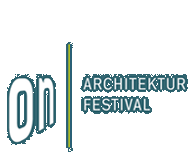

 |
| City Museum / Student House |

 |
 |
|
 |
|
Christian Knechtl Werner Neuwirth Atelier Kempe Thill MIKADO architects Riepl Riepl Architekten INNOCAD Heidl Architekten Markus Scherer Dietrich | Untertrifaller Bechter Zaffignani Architekten SEP∙Architekten Wolf D. Prix | Coop Himmelb(l)au maxRIEDER Dickinger–Ramoni TURN ON PARTNER |
City Museum City Museum Ljubljana is one of the first projects, dating from 1998–2002. This project involves the renovation and extension of the Auersperg Palace, located in the heart of the protected historical city centre of Ljubljana. The competition entry suggested a spiral itinerary for the visitor to walk through exhibition spaces with added elements between the wings of the palace, as the spaces were previously disconnected and labyrinthine. The palace and its site have a very rich history, from prehistory to the Romans and the medieval times, with each era adding a feature to the building. During the preparation activities for the renovation, a large-scale archaeological research was conducted, with the suspicion that there were rich archaeological remains under the courtyard and the internal atrium. The extension follows the path of the visitor and is a smooth, curvilinear form that follows the landscape approach rather than an architectural one. Student House Basket apartments in Paris are the most recent project of OFIS, built at the end of 2012. This project represents the other side of the architectural approach that OFIS investigates in many of their housing projects, having predefined rectangular forms where most of research is done in the facade layer. The project is located on a long and very narrow site, on the edge of Parc La Vilette in Paris’ 19th district. To the northeast, the new Paris tram route passes along the site. The site borders a tram garage to the southwest, above which there is a football field. The parcel has a very particular configuration; 11 m in width and extending approximately 200 m in a north-south direction. This foreshadows the importance of processing the eastern facade overlooking the extension of the street Des Petits Ponts which hosts the tram and both cyclist and pedestrian walkways. The long volume of the building is divided into two parts connected with a narrow bridge. Between two volumes there is a garden. The building has 11 floors and the layout is very rational and modular. The elevation towards the street Des Petits Ponts contains studio-balconies-baskets of different sizes made from HPL timber stripes. They are randomly oriented to diversify the views and rhythm of the façade. The staggered baskets create a dynamic surface while breaking down the scale and proportion of the building. The elevation towards the football field has an open passage walkway with studio entrances enclosed with a 3D metal mesh. Both volumes are connected on the first floor with a narrow bridge which is also an open common space for students. The building is energy efficient to accommodate the desires of Paris' sustainable development efforts. OFIS Rok Oman, born in 1970 in Ljubljana. 1998, graduated from the Ljubljana School of Architecture, in 2000 graduated from London’s Architectural Association. Spela Videcnik, born in 1971 in Ljubljana. 1998 graduated from the Ljubljana School of Architecture, in 2000 graduated from London’s Architectural Association. 1996 establishing of OFIS arhitekti, based in Ljubljana, Slovenia and Paris, France. Realized projects (selection): Ljubljana City Museum (2004), Football Stadium in Maribor (2008), 180 apartments in Paris (2012). Current projects (selection): Football Stadium in Borisov, Belarus. Awards (selection): "Young architect of the year" Award in London (2000), Miami Bienal, honorable mention (2005), European Grand Prix for Innovation Award (2006), Mies van der Rohe Award, nomination (2006), Silver IOC/IAKS medal for their football stadium (2009). Weiterführende Links: www.ofis-a.si Projektliste in der nextroom architektur datenbank |
|||
|
||||